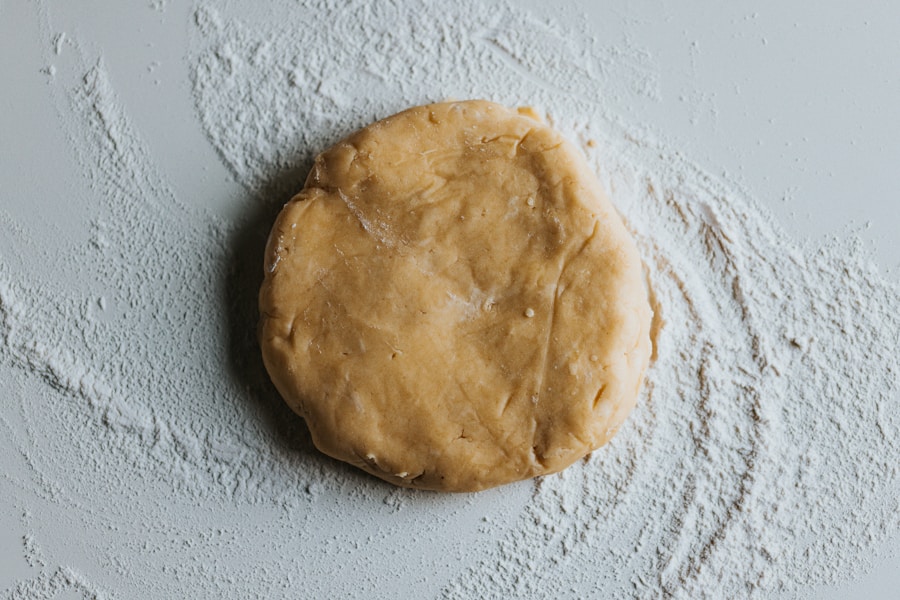Prebiotic flour is a type of flour that contains high levels of prebiotic fibers, which are non-digestible carbohydrates that promote the growth of beneficial bacteria in the gut. These fibers are found naturally in certain foods, such as chicory root, Jerusalem artichoke, and dandelion greens, and can also be added to flour during the milling process. Prebiotic flour is becoming increasingly popular as people become more aware of the importance of gut health and the role that prebiotics play in supporting a healthy digestive system.
Prebiotic flour is often used as a substitute for traditional flour in baking and cooking, and can be found in a variety of forms, including wheat, oat, and rice flour. It has a slightly nutty flavor and can add a subtle sweetness to baked goods. In addition to its digestive benefits, prebiotic flour is also a good source of fiber, vitamins, and minerals, making it a nutritious choice for those looking to improve their overall health.
The Benefits of Prebiotic Flour for Digestion
The consumption of prebiotic flour has been linked to a number of digestive health benefits. The prebiotic fibers in the flour act as food for the beneficial bacteria in the gut, helping to promote their growth and activity. This can lead to improved digestion, reduced bloating and gas, and a lower risk of digestive disorders such as irritable bowel syndrome (IBS) and inflammatory bowel disease (IBD).
In addition to supporting gut health, prebiotic flour can also help to regulate blood sugar levels and promote a feeling of fullness, making it a valuable tool for those looking to manage their weight or improve their overall diet. The high fiber content of prebiotic flour can also help to lower cholesterol levels and reduce the risk of heart disease. Overall, incorporating prebiotic flour into your diet can have a positive impact on your digestive health and overall well-being.
How to Incorporate Prebiotic Flour into Your Baking
There are many ways to incorporate prebiotic flour into your baking. One simple way is to use it as a substitute for traditional flour in your favorite recipes. You can use prebiotic flour in place of all-purpose flour in recipes for bread, muffins, pancakes, and more. It can also be used to thicken soups and sauces, or as a coating for meats and vegetables.
Another option is to mix prebiotic flour with other types of flour to create a blend that can be used in a variety of recipes. For example, you can combine prebiotic flour with almond flour or coconut flour to create a gluten-free baking mix that is high in fiber and nutrients. You can also use prebiotic flour as a thickening agent in smoothies and shakes, or as a topping for yogurt or oatmeal.
Recipes Using Prebiotic Flour for Better Digestion
There are countless recipes that can be made using prebiotic flour to support better digestion. One popular option is to make a batch of prebiotic flour pancakes or waffles for a nutritious and filling breakfast. You can also use prebiotic flour to make homemade bread or pizza dough, adding extra fiber and nutrients to these staple foods.
For those with a sweet tooth, prebiotic flour can be used to make cookies, brownies, and other baked treats that are both delicious and good for your gut. You can also use prebiotic flour as a thickening agent in soups and stews, or as a coating for chicken or fish before baking or frying. The possibilities are endless when it comes to using prebiotic flour in your cooking and baking, so don’t be afraid to get creative and experiment with different recipes.
Tips for Choosing the Right Prebiotic Flour
When choosing prebiotic flour, it’s important to look for high-quality products that are made from natural ingredients and have a high fiber content. Look for flours that are labeled as “prebiotic” or “high in prebiotic fibers,” and check the ingredient list to ensure that the flour contains sources of prebiotic fibers such as chicory root or Jerusalem artichoke.
It’s also a good idea to choose organic prebiotic flour whenever possible, as this will ensure that the flour is free from pesticides and other harmful chemicals. Additionally, consider trying different types of prebiotic flour, such as wheat, oat, or rice flour, to see which one you prefer in terms of flavor and texture. Finally, be sure to store your prebiotic flour in an airtight container in a cool, dark place to preserve its freshness and nutritional value.
Other Ways to Improve Digestion with Prebiotics
In addition to using prebiotic flour in your cooking and baking, there are other ways to incorporate prebiotics into your diet to support better digestion. Foods such as garlic, onions, leeks, asparagus, bananas, and apples are all rich sources of prebiotic fibers and can be easily added to meals and snacks. You can also take prebiotic supplements to ensure that you are getting enough of these beneficial fibers in your diet.
Incorporating fermented foods into your diet is another great way to support gut health and promote the growth of beneficial bacteria. Foods such as yogurt, kefir, sauerkraut, kimchi, and miso are all rich sources of probiotics, which are live bacteria that can help to improve digestion and boost the immune system. By combining prebiotics with probiotics in your diet, you can create an optimal environment for gut health and overall well-being.
Precautions and Considerations When Using Prebiotic Flour
While prebiotic flour can offer many benefits for digestion and overall health, it’s important to use it in moderation and be mindful of any potential side effects. Some people may experience digestive discomfort such as gas or bloating when first introducing prebiotic fibers into their diet, so it’s best to start with small amounts and gradually increase your intake over time.
If you have any underlying digestive issues or medical conditions, it’s always a good idea to consult with a healthcare professional before making significant changes to your diet. Additionally, if you have any food allergies or sensitivities, be sure to check the ingredient list on prebiotic flour products to ensure that they are safe for you to consume.
In conclusion, prebiotic flour is a valuable tool for supporting better digestion and overall health. By incorporating prebiotic flour into your cooking and baking, you can enjoy the many benefits of these beneficial fibers while creating delicious and nutritious meals. With the right precautions and considerations in mind, you can make the most of prebiotic flour and improve your digestive health for years to come.




